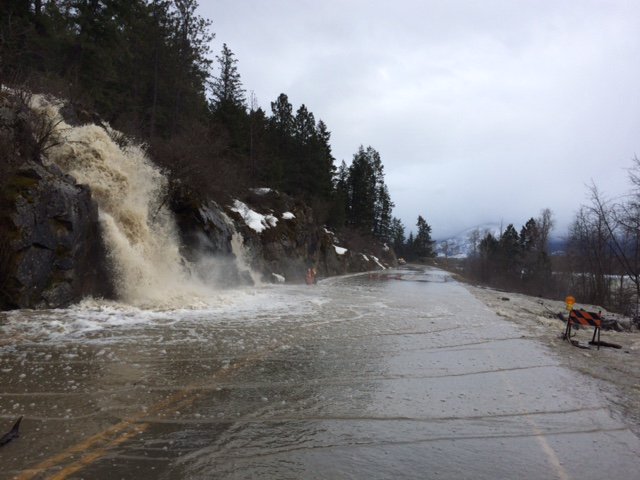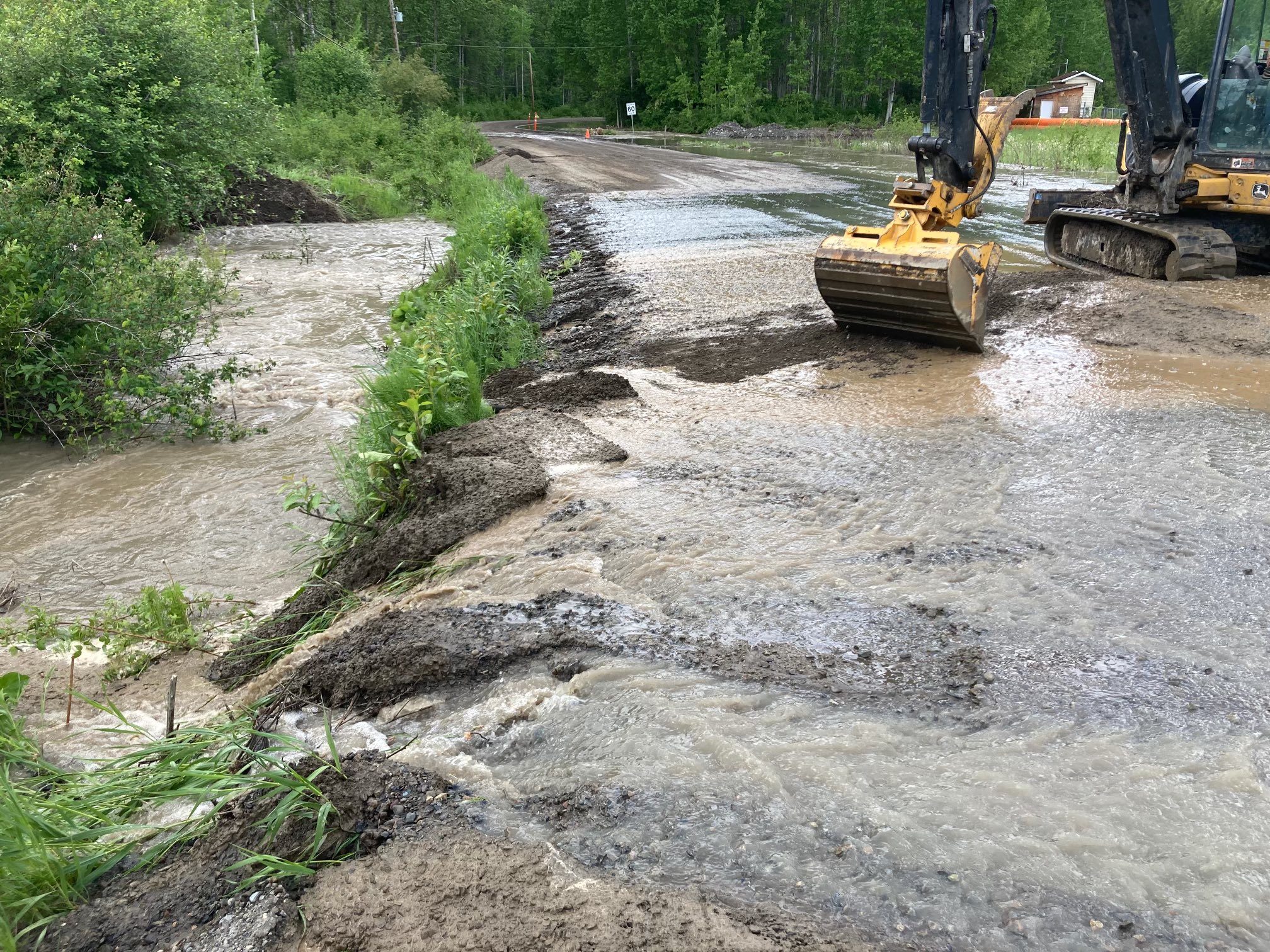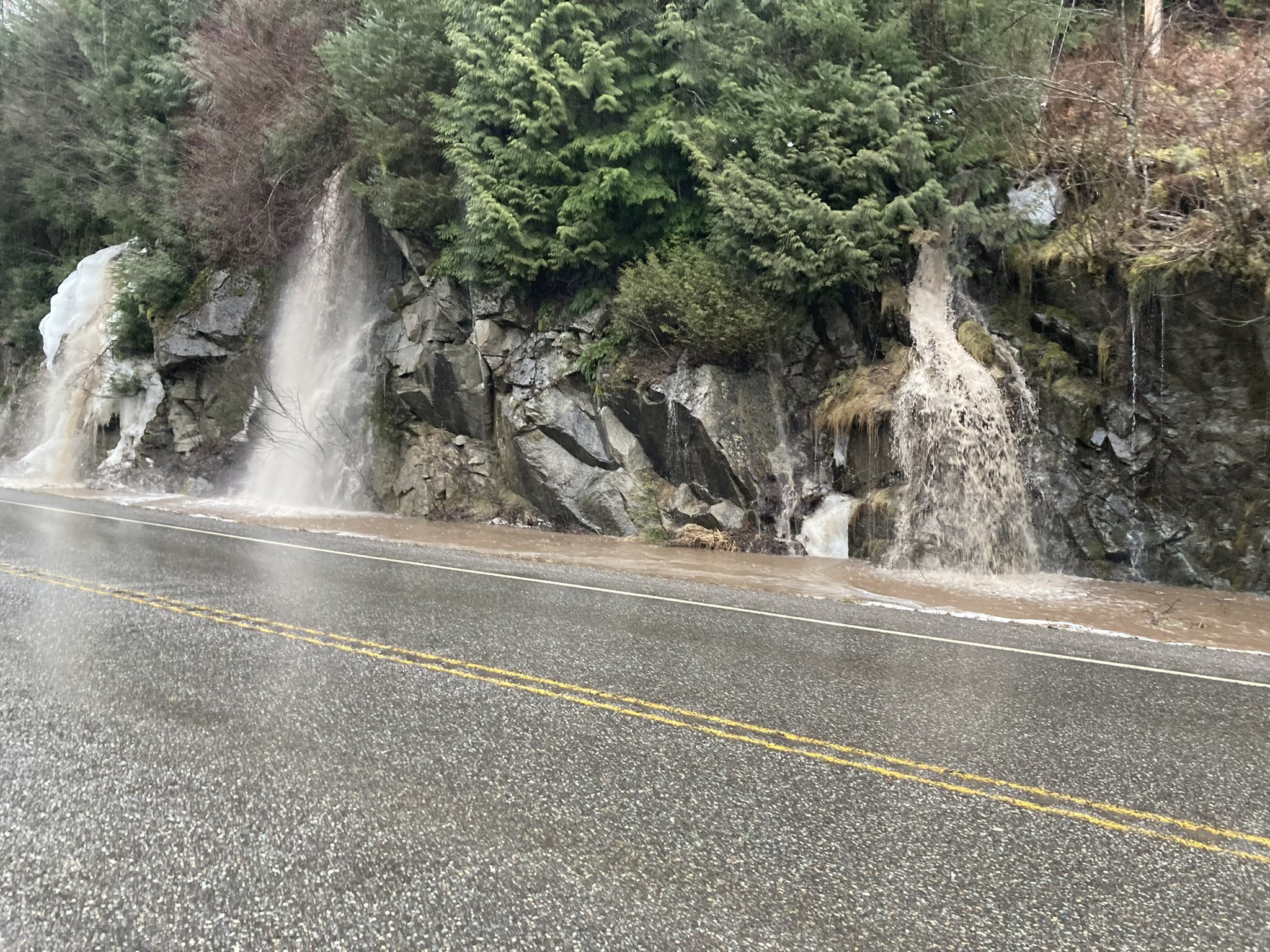
So, what is freshet? While it sounds like it could be a brand of scented cleaner or facial tissue, freshet is the snow melt that typically occurs from April to July, in BC.
Freshet can become a problem when winter snow packs melt rapidly, overwhelming stream channels and creating floods. Happily, freshet flooding can usually be forecast by monitoring snow packs and weather, and examining stream capacity data.
In the event of a flood threat or actual flood, the Ministries of Environment and Transportation and Infrastructure, Emergency Management BC and other provincial government agencies will work with local authorities to activate their flooding plans, manage the situation to minimize disruption, communicate with the public and provide critical services while ensuring public safety.

During these times, the ministry has an additional critical role in arranging for equipment, materials and contracted labour for flood prevention and management. We will also continue to maintain roads by responding to floods, and advise the public of any affected routes or detours.
Note: Spring freshet can also destabilize soil and rock, causing mudslides, landslides and rock slides. For the ministry, reducing risk of these incidents and clearing them up when they do happen, is all in a day’s work.
- For information on the current snow pack conditions and water supply, go to the River Forecast Centre.
- For information on active provincial advisories and flood-related information, go to EmergencyInfoBC and follow them on Twitter @EmergencyInfoBC
- For information on preparing for floods, go to PreparedBC and follow them on Twitter @PreparedBC
Do you have any questions about freshet, flood control work or anything else we do? Let us know in the comments below. Want to learn more about how we deal with water on BC highways? Check out these related blogs:

Hi. I was wondering where and when this photo was taken?
Hi Candace,
We are looking into this for you. Stay tuned!
Hi Candace,
Thanks for your interest in our photo which illustrates freshet. Unfortunately, we don’t have a year or location for the photo.
Candace this picture was taken south of creston bc about 3km north of the can/us border crossing
It should be noted that Ministry and Maintenance Contractors are on increased patrol, and watching especially for creeks “running black”, or with unusually low flows – perhaps indicating some untoward action upstream. And then, weather permitting, they might fly it, as well adjacent drainages, to survey and monitor the extent of the general havoc a freshet with an early “warm-rain-up-high” can wreak 😉
Thank you Grainger.
The road closure page is not up to date.
Hi Irene,
Something in particular we can look into for you? We try to update it twice a day.